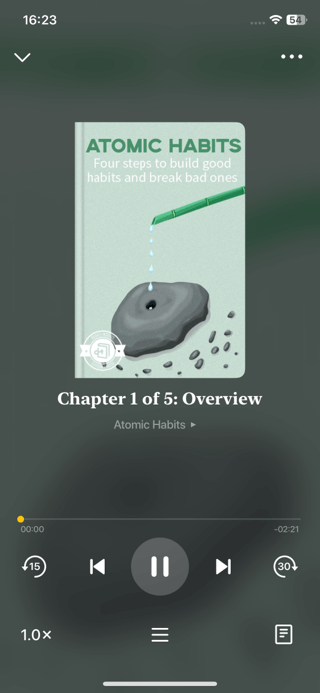Last updated on 2025/05/03
Angela Davis Summary
Angela Y. Davis
A Revolutionary Life of Activism and Resistance
Last updated on 2025/05/03
Angela Davis Summary
Angela Y. Davis
A Revolutionary Life of Activism and Resistance
Description

How many pages in Angela Davis?
420 pages
What is the release date for Angela Davis?
In "Angela Davis: An Autobiography," Angela Y. Davis offers a compelling and insightful narrative that weaves together her personal journey with the broader socio-political movements of the 20th century. Through her reflections on activism, imprisonment, and the relentless pursuit of justice, Davis creates a powerful testament to the struggle for civil rights and the fight against systemic oppression. With her eloquent prose and profound wisdom, she invites readers to examine not only her life but the pressing issues that continue to resonate today, encouraging a deeper understanding of the intersections between race, gender, and class. This autobiography is not merely a chronicle of her achievements; it’s a call to action for all who yearn for a more equitable society.
Author Angela Y. Davis
Angela Y. Davis is an influential activist, scholar, and author, renowned for her pivotal role in the civil rights movement and her enduring advocacy for social justice, prison reform, and feminist theory. Born on January 26, 1944, in Birmingham, Alabama, Davis emerged from a context marked by racial segregation and social unrest, which profoundly shaped her worldview and commitment to activism. A former member of the Black Panther Party and the Communist Party USA, she gained international attention in the 1960s and 1970s for her outspoken opposition to the systemic injustices faced by marginalized communities. Davis's academic career is equally distinguished; she has held professorships at institutions such as the University of California, Santa Cruz, where she teaches courses on the intersections of race, class, gender, and the prison system. Through her prolific writings, public speaking, and relentless activism, Angela Y. Davis continues to inspire generations to challenge oppression and envision a more equitable society.
Angela Davis Summary |Free PDF Download
Angela Davis
Part 1 | Nets
The narrative unfolds as Angela Davis reflects on her experiences as a fugitive following the Marin County courthouse revolt and the subsequent death of her friend Jonathan Jackson. This turmoil catalyzes her journey into hiding, entangled in grief, fear, and the relentless sense of surveillance from law enforcement authorities. Her story illustrates the psychological and physical trials faced not just by her, but by countless others in similar struggles for justice. 1. Escaping Reality: Davis initially confronts her new reality while hiding with her friend Helen. The weight of loss and the constant dread of being captured force her into a state of vigilance. The anxieties of living as a fugitive translate into a visceral description of fear and surveillance, echoing the oppressive experiences of African Americans throughout history. 2. A History of Surveillance: Davis recounts how her earlier activism and associations—with organizations like the Student Nonviolent Coordinating Committee (SNCC) and the Communist Party—set the stage for her current crisis. This background serves to explain the legal entanglements that lead to her becoming a "wanted" fugitive, linking her plight to broader systemic issues of racial injustice and political repression. 3. Solidarity Amidst Isolation: Once she finds refuge in a varied network of supporters, including Hattie and others who risk their safety to shelter her, Davis articulates a sense of community that transcends her solitary circumstances. The warmth of human connection offers a stark contrast to the isolating fear of capture, showcasing the significance of support systems in times of crisis. 4. Justice as a Social Movement: The narrative transitions to reflect on the connections between personal experience and collective action, as Davis becomes a symbol of broader political struggles. Her experiences in jails reveal an informal network among incarcerated women, creating a culture of resistance against the injustices they face. The women forge connections through shared struggles, revealing an undercurrent of solidarity even amidst deeply oppressive conditions. 5. Political Being in a Penal Context: With the backdrop of her new surroundings in the correctional facility, Davis discusses the societal structures attempting to break her spirit. She uses her influence to engage fellow inmates in political discourse, empowering them to understand their shared experiences and organize around issues like bail reform and collective rights. 6. Enduring Struggle Against Erasure: Throughout her confinement, Davis grapples with her identity as a political prisoner, discovering that her struggles reflect larger issues of race, class, and systemic oppression. As she navigates her place within this environment, she finds strength in her connections to radical politics, refusing to let her individuality be subsumed by institutional narratives. 7. The Power of Resilience: The climax of the text culminates in a fervent demonstration outside the Women's House of Detention, symbolizing collective voices raised in solidarity. Davis experiences moments of hope and despair as she balances between her realities in the jail system and the hopeful currents of external support. 8. Extradition and Identity: As Davis is ultimately extradited back to California, the anticipation of facing the charges against her looms heavily. She reflects on the implications of her capture as not just an individual event, but as emblematic of a society's broader oppressive tactics against marginalized voices. Through her narrative, Angela Davis weaves a rich tapestry of individual struggle, collective resilience, and the quest for justice, revealing both personal and systemic challenges entrenched within the American penal system. As she faces her extradition, the interconnectedness of her life, political beliefs, and the larger historical context of racial and political injustices remains deeply resonant.
Key Point: Solidarity Amidst Isolation
Critical Interpretation: Imagine finding yourself isolated, navigating a storm of fear and uncertainty, yet in the depths of your struggle, you uncover a lifeline: the warmth of community. This chapter of Angela Davis's life invites you to reflect on your own experiences of vulnerability, highlighting the profound impact human connection can have in your darkest moments. Just as Davis discovered that her survival hinged on the solidarity of others who risked their safety to support her, you too can draw strength from the relationships that bolster you. In times of personal turmoil, remember the transformative power of empathy and community, and seek out those connections that will uplift you, reminding you that you are never truly alone in your battle for justice and hope.
Part 2 | Rocks
In the second part of “Angela Davis,” the author recounts her experiences growing up as a Black child in Birmingham, Alabama, during the late 1940s and 1950s. This formative period is marked by her family's transition from a government housing project to a racially charged neighborhood known as Dynamite Hill, and the myriad complexities of race, identity, and social justice she navigated as she matured. 1. Relocation and Racial Division: The Davis family moved from a cramped government housing project to a large wooden house on Center Street. This new environment, while offering space and a hint of nature, was also a battleground for racial divisions. As the first Black family in a predominantly white neighborhood, they faced hostility and violence. Angela's early recognition of these racial tensions contrasted the communal bonds she had experienced in the projects. This new community quickly drew lines of demarcation, where crossing over resulted in threats of violence. 2. Influence of Family: Angela’s parents played a pivotal role in shaping her understanding of race and love. Her mother encouraged a narrative of potential and positivity concerning white individuals, stressing that hate was not inherent. Despite the violence surrounding them, Angela’s family instilled in her a sense of dignity and a refusal to accept the hostility around them. Her father's insistence on vigilance hinted at the harsh realities of their existence. Additionally, familial visits to their ancestral farm in Marengo County connected Angela to her heritage, contrasting the oppression they faced in the city with a nostalgic view of their past. 3. Confronting Racism and Identity: As Angela began attending school, she perceived for the first time the inequities in education and socioeconomic status. The shoddy conditions of her school, Carrie A. Tuggle, stood in stark contrast to the well-kept white schools nearby. This disparity deeply impacted her understanding of systemic racism and issues of class within her own community. Gratified by reading and education, Angela emerged with a sense of responsibility towards her less fortunate peers, often going to great lengths to share her resources with them. 4. Peer Dynamics and Violence: The violence among her peers mirrored the racial violence in the world around them. In school and during various social scenarios, Angela witnessed fights that reflected the struggle, confusion, and fear present within their community. She identified this internalized violence as a consequence of broader societal oppression, driving her desire to push for understanding and change. 5. Cultural Education: Despite the adversity, Angela found empowerment in her school's structure, which focused on Black History, fostering pride in their identity. Programs like Negro History Week enabled her to connect with inspiring figures, creating a sense of collective strength among her peers. Yet, the ambivalence in teaching styles conflicted with her internal understanding of racial injustices. 6. Seizing Opportunities: As racial tensions escalated with the emergence of the civil rights movement, Angela felt an urge to participate but was held back by her age and gender. Fear of the consequences of civil disobedience haunted her upbringing, deepening her frustrations with systemic oppression. Nevertheless, her parents’ commitment to the movement inspired her, even as she navigated the complexities of adolescence and aspiration. 7. Escaping to New York: As she yearned for escape from her provincial surroundings, Angela discovered educational opportunities in the North, notably the early entrance program at Fisk University and a chance to attend an integrated high school in New York. The decision to leave Birmingham, despite her mother's reservations, was marked by her quest for both freedom and broader understandings of culture and opportunities. 8. Newport and Political Awakening: Arriving in New York, Angela was introduced to a progressive educational environment starkly different from Birmingham’s culture. She attended a school that was a haven for open-minded learning, where she could explore socialism and develop a deeper critique of capitalist society. It was through this education that she began to view the struggles of Black people through a class-based lens, leading her toward a radical transformation in her beliefs. 9. Engagement with Activism: Angela became involved in youth organizations like Advance, solidifying her connections with prominent civil rights figures. As protests and sit-ins emerged in the South, she expressed her desire to return home, feeling a growing urgency to join the movement directly. Her personal journey intertwined with the broader fight for justice, shaping her commitment to activism at a crucial time in history. Through these different stages of her young life, Angela Davis reflects on the jagged intersections of race, identity, and societal structures that shaped her worldview. These cumulative experiences not only molded her as an individual but also laid the foundation for her later activism and scholarship as a prominent figure in the civil rights movement.
Key Point: The importance of community and family support in overcoming adversity.
Critical Interpretation: As you reflect on Angela Davis's childhood experiences in Birmingham, consider how essential it is to cultivate a supportive network of family and friends who uplift you, especially during challenging times. Just like Angela's parents instilled resilience and pride in her, you can draw strength from your loved ones to navigate life's obstacles. Embrace the values of love, dignity, and understanding that shape your identity, reminding you that the bonds you nurture can empower you to rise above societal challenges and advocate for change. Let the story of Angela’s family inspire you to foster your own supportive community, where mutual empowerment becomes a catalyst for personal and collective growth.
Part 3 | Waters
Part Three of Angela Davis's narrative describes her experience of isolation and awakening during her college years at Brandeis University and her subsequent journey abroad, which played a significant role in shaping her political consciousness. 1. The initial sense of alienation: Arriving at Brandeis University, Angela was acutely aware of her status as one of the few Black students amid a largely white population. Despite receiving a full scholarship, she battled feelings of anger, loneliness, and dislocation. Her experiences were shaped further by the isolating atmosphere of Waltham, Massachusetts, which lacked social and cultural connections. 2. Building connections: Despite her overall disillusionment, Angela found solace in a few friendships, particularly with Alice, another Black student, and others at the university, including political figures and international students. A pivotal moment arose during the Cuban Missile Crisis when Baldwin’s lectures prompted protests that helped tether Angela to a broader social movement and begin her engagement in activism. 3. A journey of cultural exploration: Angela's determination to understand the interconnectedness of global struggles led her to attend the Eighth World Festival for Youth and Students in Helsinki, Finland. This experience deepened her understanding of international revolutionary movements and inspired her participation in discussions that transcended her immediate environment. 4. Tragedy and awakening: While studying in Europe, Angela was struck by the bombing of a church in Birmingham that resulted in the deaths of four young girls, serving as a profoundly personal reminder of the violence of racism back home. She felt a deep sense of loss compounded by the insensitivity of her peers, which underscored the isolation she often experienced. 5. Expanding political consciousness: As she continued her academic pursuits in Paris and later in Frankfurt, Angela became increasingly involved in political discourse, engaging with concepts of social justice, existentialism, and philosophy under influential thinkers. A significant realization occurred as she grappled with the intersections of her education and the urgent socio-political issues occurring back in the U.S., particularly during the rise of the Black Power movement. 6. The struggle for relevance: Within the political landscape of 1960s America, Angela felt an intense urgency to be actively involved in the transformative movements taking place. As revolutionary sentiments simmered, she recognized that her theoretical studies needed to align with practical actions, leading her to prioritize her engagement with the ongoing struggle for civil rights and liberation. 7. Return to activism: Ultimately, after two years abroad, Angela made the decisive choice to return to the U.S., motivated by a sense of responsibility and the desire to contribute directly to the burgeoning movements advocating for Black liberation and social justice. Through this part of her journey, Davis illustrates her transformation from a solitary figure in an isolating academic environment to a pivotal voice influenced by global struggles for justice, reinforcing the interconnectedness of personal experience and collective action.
Key Point: The interconnectedness of personal experience and collective action.
Critical Interpretation: Imagine standing at the precipice of your own journey, feeling torn between isolation and a yearning for purpose. Just as Angela Davis grappled with her place in a world marred by injustice, you too can reflect on how your personal struggles resonate with broader societal issues. This chapter urges you to transform your feelings of alienation into a catalyst for change, reminding you that your unique experiences are not isolated incidents but rather threads woven into the larger tapestry of humanity's fight for justice. Let Davis’s journey inspire you to seek connection, engage actively in your community, and recognize that your voice—when combined with others—holds the power to challenge oppression and create a more equitable world.
Part 4 | Flames
In the summer of 1967, Angela Davis attended a conference in London titled "The Dialectics of Liberation," featuring prominent figures such as Herbert Marcuse and Stokely Carmichael. The conference attracted an eclectic mix of participants, including Marxist theorists, radical activists, and hippies, all sharing a commitment to social justice. During this event, Davis observed the parallel struggles of Black communities in London and the United States, leading her to critique the tendency among some leaders to view all white individuals as enemies. She recognized the need for a more nuanced understanding of the systemic issues of racism, and she realized that an emotional response would not suffice for a political solution to the oppression faced by Black people. Davis spent time with Carmichael and Michael X, a militant West Indian leader, discussing the importance of integrating the Black liberation struggle into a broader revolutionary movement that included all working people, which should ideally lean towards socialism. However, she was disillusioned to find resistance to Marxist ideas among some Black leaders, demonstrating a disconnect she hoped would be addressed through Carmichael's upcoming trip to Cuba. Upon returning to Southern California, Davis's efforts to engage with the local Black community were met with frustration, as initial attempts to connect with leaders like Tommy J in Watts proved futile. In San Diego, she connected with graduate students and attempted to join local movement efforts but remained isolated. She participated in a protest against the Vietnam War, revealing her feelings of alienation among her peers, compounded by the growing police presence at such demonstrations. Following a frustrating experience with law enforcement after protests, Davis and her friends were eventually released, leading them to further explore organizing against police violence. By the fall of 1967, Davis was excited to be a part of a burgeoning Black Student Union at the University of California, San Diego, which marked a significant milestone in her activism. The organization aimed to unite Black and working-class students to address systemic injustices. During this time, Davis attended the Black Youth Conference in Watts, which showcased the strengths of Black culture but also the lingering sectarian and ideological conflicts among various factions within the Black struggle. An encounter with a surge of violence at the conference illustrated the deep political divides that existed. Davis was particularly struck by the passionate speeches from figures like James Forman of SNCC, who advocated for a combined class and race analysis within the movement. This led Davis to re-evaluate her place within various factions of activism, seeking a path that could facilitate broader unity. The assassination of Martin Luther King, Jr. in April 1968 hit Davis profoundly, igniting both sorrow and rage. With tensions rising in urban areas, she and other activists strategized ways to channel the community's anger productively through organized resistance rather than violence. Their work culminated in a rally that united various factions against systemic racism, advocating for the release of political prisoners like the Soledad Brothers. Davis's involvement with the Black Panther Party and various other organizations reflected her evolving understanding of revolutionary politics, the collective struggle, and the importance of grassroots organizing. She became heavily involved in mobilizing support for the imprisoned Soledad Brothers, writing extensively about the necessity to confront not just individual cases, but the larger systemic issues that bound together the struggles for liberation across different communities. Her activism attracted national attention, leading to further repression from authorities. After openly declaring her Communist Party membership, she faced a barrage of threats and media scrutiny, revealing the deeply entrenched anti-communism and racism that pervaded American society. Nonetheless, her commitment to struggle for justice only deepened. Ultimately, Davis's experiences, reflections, and evolving political consciousness illustrate the intersectionality of race, class, and gender in the fight for liberation and the challenges activist movements faced in navigating ideological differences, state repression, and the need for solidarity. Through her story, she emphasizes that revolution transcends mere participation; it is a lifelong commitment interwoven with the aspiration for a collective, free existence for all marginalized peoples.
Key Point: The importance of collective struggle and solidarity among marginalized communities.
Critical Interpretation: As you reflect on Angela Davis's journey, consider how vital it is to engage with diverse voices in your own community. You may find yourself inspired to look beyond the surface differences and unite with others who are fighting their own battles against systemic injustices, recognizing that the struggles for racial, economic, and gender equality are intertwined. Imagine channeling your energy into building connections across various social movements, understanding that true freedom and justice can only be achieved through collective action and solidarity.
Part 5 | Walls
PART FIVE: Walls explores Angela Davis's harrowing journey through the prison system during a pivotal chapter of the Black liberation struggle in the United States. Following her extradition from New York to California, Davis recounts the stark differences between facilities, her experiences with jailers, and the ongoing support she receives from a dedicated grassroots movement advocating for her and other political prisoners. 1. Upon her arrival in Marin County Jail, Davis is overwhelmed by a sense of fear mixed with relief. While handcuffed and closely monitored, she is welcomed by a crowd chanting "Free Angela Davis." This moment acts as a powerful source of strength for her amid the oppressive environment of incarceration. She contrasts the new jail with the degrading conditions she faced at the Women's House of Detention in New York, highlighting the pervasive surveillance and discomfort within the prison walls. 2. As she navigates through the mechanical and sterile environment of Marin County Jail, Davis's feelings oscillate between anger at state oppression and a yearning for connection with her comrades, especially her fellow prisoners and her legal team. Her thoughts frequently drift toward her incarcerated friends, particularly George Jackson, revealing the deep-rooted connections between their struggles and the broader fight against systemic racism and injustice. 3. Davis details the psychological toll of jail as she encounters solitude, constant surveillance, and the threat of violence. The harrowing sounds of other prisoners’ screams heighten her anxiety, illustrating the brutal reality of life behind bars. Despite this, the solidarity she feels from her supporters fuels her motivation to resist the mechanisms of oppression. 4. In the courtroom, the process of legal representation unfolds against the backdrop of a deeply flawed judicial system. Davis emphasizes that the fight for her freedom transcends personal liberty; it reflects a broader movement against racism and oppressive state power. The organization of a legal defense team becomes a crucial method for articulating her political stance and advocating for the collective rights of marginalized groups, while also maintaining a steadfast commitment to her political beliefs. 5. As her case progresses, Davis reflects on the implications of various legal strategies. The complexity of navigating a legal system laden with racial bias becomes evident, as the courtroom dynamics reveal pervasive inequalities and manipulation of the law to maintain existing power structures. Her insistence on participating as co-counsel demonstrates her determination to assert her agency in the fight against systemic oppression. 6. Davis’s reflections culminate in the emotional resonance of George Jackson's murder and the solidarity it inspires within the movement. His death catalyzes renewed anger and motivation for collective action, reinforcing her belief in the necessity of continued struggle for freedom. The narrative intersperses personal grief with a resolute commitment to combating injustice. 7. The struggles and strategies detailed in these accounts signify a broader quest for liberation that unites diverse community members, framed around the mission to free political prisoners and dismantle the structural forces fueling oppression. The intricate web of support networks and robust grassroots organizing emerges as crucial elements in challenging injustice, underscoring the power of collective action. 8. As Davis chronicles her eventual release on bail, her elation is tempered by a profound awareness of the ongoing struggles faced by her comrades still imprisoned. She acknowledges that her newfound freedom is intertwined with a collective responsibility to advocate for those who remain behind bars. This underscores her commitment to using her voice and agency to forge paths toward liberation for all political prisoners. PART FIVE encapsulates the intersection of personal narrative and broader political discourse, highlighting the resilience of Angela Davis as she navigates the complexities of incarceration, the challenges of the legal system, and the unwavering support of a committed movement. Her experiences become a testament to the relentless fight for justice and equality, emphasizing that true freedom cannot exist without fighting for the liberation of all oppressed individuals.
Part 6 | Bridges
During Angela Davis' time at Brandeis University, she and a friend, Lani, hitchhiked to Gloucester, Massachusetts, to experience the beauty of the town. Their journey, however, was a violation of the strict rules governing female students, leading to a trial at the university when they were caught spending the night in a men's dormitory. The tribunal's self-righteous condemnation exemplified the moral policing that female students faced, treating Davis and Lani as "moral criminals." The two were sentenced to thirty days of restricted dormitory access, showcasing the oppressive nature of institutional regulations. Fast forward to Davis' later experiences as a defendant in a far more consequential trial, she drew parallels between the trivial university tribunal and the life-threatening reality of her current situation. The courtroom atmosphere was charged with tension as jury selections began, and pre-existing biases against her were revealed during the voir dire process. Through candid testimonies from potential jurors, Davis learned harsh truths about racism, prejudice, and the complexities of identity and justice in an American court. One key juror, Mrs. Janie Hemphill, resonated with Davis as her life story epitomized the shared struggles faced by Black women. Unfortunately, she was soon dismissed from the jury, underlining the systemic challenges in building a fair legal process. As the trial unfolded, the prosecution relied heavily on emotional appeals, attempting to frame Davis' political activism as mere passion for a man she loved. However, her defense team highlighted the paradox of this narrative, showcasing the political nature of her involvement in movements for prison reform and justice for political prisoners, particularly the Soledad Brothers. The trial became a platform for articulating a broader critique of oppression, and the defense team strategically chose to present a counter-narrative that emphasized political motives rather than personal passions. Throughout the proceedings, there were moments of harrowing clarity, where testimonies and cross-examinations shined a light on racial biases and the often flawed nature of eyewitness accounts in crimes. In a pivotal moment, the trial faced unexpected turmoil when a hijacking occurred concurrently, causing great anxiety about its potential influence on the jury's deliberations. Nevertheless, as the jury reached their verdict, the courtroom held its breath. In a profound moment of collective joy and relief, the jury announced "Not Guilty" on all counts against Davis, signaling a significant victory not just for her personal freedom, but for all who rallied around issues of civil rights and against systemic oppression. The response was overwhelming, with cheers and tears marking the occasion. Davis' conviction remained steadfast in the struggle for broader justice — a commitment that transcended her own legal battles and resonated with movements for equality, illustrating how individual acts of resistance can catalyze collective action. With the verdict behind her, Davis looked towards the continuing challenges, affirming her resolve to fight for her comrades and the broader cause of liberation.










